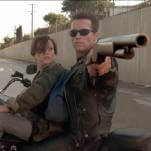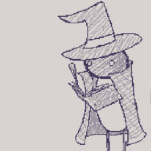Sky Captain And The World Of Tomorrow

Eventually, the plot of Sky Captain And The World Of Tomorrow explains the "world of tomorrow" half of its title, but until that happens, the film suggests several possible readings. It appears to be set in 1939—not the historical version, but a 1939 in which the zeppelin Hindenburg III traverses the sky, and noble pilots keep the streets safe from harm. It's the past as it imagined its own world of tomorrow, seen thorough the filters of Popular Science, comic books, Flash Gordon, and pulp paperbacks, and reflected on a mirror of deco curves. On another, more meta level, Sky Captain might have created its own world of tomorrow. Writer-director Kerry Conran uses live actors (mostly) and real props, but only the film's most obviously tangible elements have any real-life substance. He doesn't just use CGI effects to fill in the gaps reality can't; he uses them to create reality itself in a way that even the latest batch of Star Wars films haven't dared. The effects don't enhance the sets and locations. They become the sets and locations.








































